
Author: Daniel Kim, Ryan Yoon, Jay Jo; Source: Tiger Research; Compiler: Shaw Bitcoin Vision
This report presents Tiger Research’s outlook for Bitcoin in the fourth quarter of 2025, with a target of $200,000, citing continued buying by institutional investors amid market volatility, the Fed’s interest rate cuts, and October’s plunge confirming the dominance of institutions in the market.
Key takeaways
-
Institutional investors continue to increase their holdings amid volatility——ETF net inflows remained stable in the third quarter, and MSTR increased its holdings of 388 Bitcoins in a single month, strengthening its long-term investment belief;
-
Overheating but not yet extreme——The MVRV-Z index is 2.31, indicating that valuations are high but have not yet reached extreme levels. The liquidation of leveraged funds has cleared short-term traders and created space for the next wave of gains;
-
Global liquidity environment continues to improve——The broad money supply (M2) exceeded US$96 trillion, hitting a record high. Expectations for the Federal Reserve to cut interest rates have increased, and it is expected that it will cut interest rates 1-2 times this year.
Institutional investors buy amid U.S.-China trade uncertainty
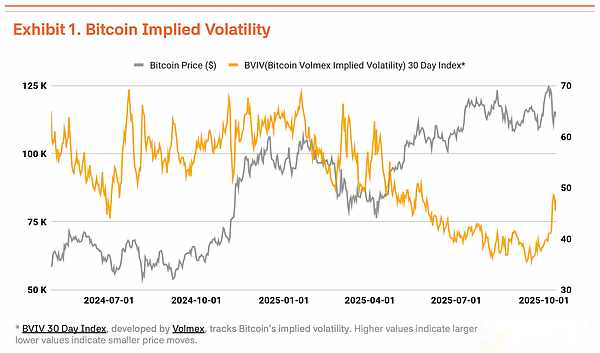
In the third quarter of 2025, the Bitcoin market slowed down from the strong gains in the second quarter (up 28% quarter-on-quarter) and entered a volatile sideways phase (up 1% quarter-on-quarter).
On October 6, Bitcoin hit a record high of $126,210, but the Trump administration once again exerted trade pressure on China, causing the Bitcoin price to fall back 18% to $104,000, and volatility increased significantly.According to Volmex Finance’s Bitcoin Volatility Index (BVIV), Bitcoin volatility narrowed from March to September as institutional investors steadily increased their holdings, but surged 41% after September, exacerbating market uncertainty (Chart 1).
The pullback appears to be temporary, driven by renewed trade friction between China and the United States and Trump’s tough rhetoric.Strategic accumulation by institutions, led by Strategy Inc. (MSTR), is actually accelerating.The macro environment also contributed to the situation.The global broad money supply (M2) exceeded US$96 trillion, a record high, and the Federal Reserve lowered interest rates by 25 basis points to 4.00%-4.25% on September 17.The Federal Reserve has hinted that it will cut interest rates 1-2 more times this year. The stable labor market and economic recovery have created favorable conditions for risk assets.
Institutional inflows remain strong.Net inflows into Bitcoin spot ETFs reached $7.8 billion in the third quarter.Although down from the $12.4 billion in the second quarter, maintaining net inflows throughout the third quarter confirms steady buying from institutional investors.This momentum continued into the fourth quarter – US$3.2 billion was recorded in the first week of October alone, setting a new high for single-week inflows in 2025.This suggests that institutional investors view price pullbacks as strategic entry opportunities.Strategy continued to buy during the market correction, purchasing 220 Bitcoins on October 13, 168 Bitcoins on October 20, and a total of 388 Bitcoins purchased within a week.This shows that institutional investors firmly believe in Bitcoin’s long-term value, regardless of short-term fluctuations.
The data signal on the chain is overheated and the fundamentals remain unchanged
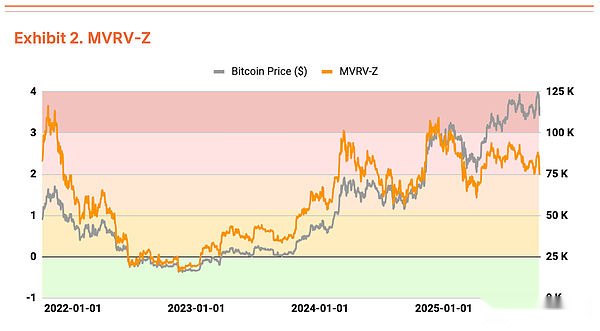
On-chain analysis reveals some signs of overheating, although valuations are not yet concerning.The MVRV-Z indicator (market capitalization to realized value) is currently in overheated territory at 2.31, but has stabilized relative to the extreme valuation range that approached July-August (Chart 2).
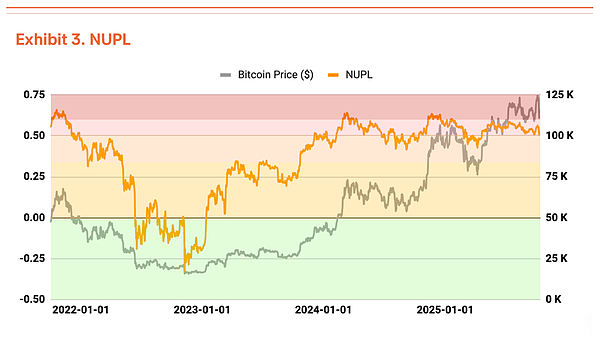
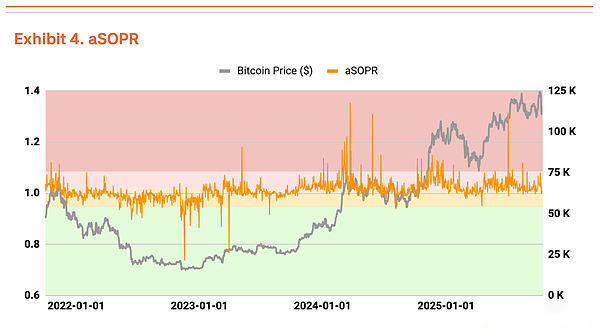
The net unrealized profit/loss ratio (NUPL) also shows overheating territory, but has moderated from the high unrealized profit situation in the second quarter (Chart 3).The Adjusted Spending Output Profit Margin (aSOPR), which reflects investors’ realized gains and losses, is very close to the equilibrium value of 1.03, indicating no cause for concern (Chart 4).
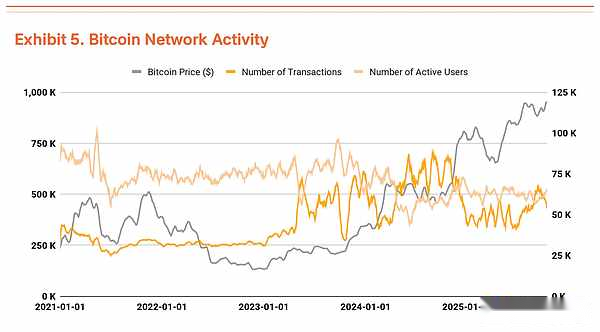
The number of Bitcoin transactions and active users remained at similar levels to the previous quarter, indicating a temporary slowdown in network growth momentum (Chart 5).At the same time, total transaction volume is trending upward.A decrease in the number of transactions but an increase in transaction volume means larger amounts of money were moved in fewer transactions, indicating an increase in large-scale fund flows.
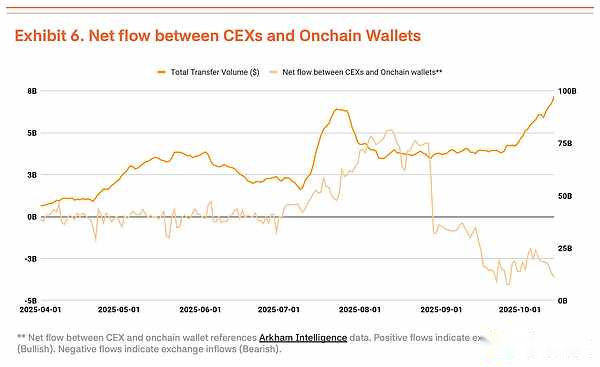
However, we cannot simply view the expansion in trading volume as a positive sign.There has been a recent increase in inflows into centralized exchanges, which usually indicates that holders are preparing to sell (Chart 6).In the absence of improvement in fundamental indicators such as the number of transactions and active users, the increase in transaction volume is more indicative of short-term capital flows and selling pressure in a high-volatility environment, rather than an expansion of real demand.
The Oct. 11 crash proves the market has shifted toward institutional dominance
The collapse of centralized exchanges on October 11 (down 14%) proves that the Bitcoin market has shifted from being dominated by retail investors to being dominated by institutions.
The key point is: the market reaction is completely different from before.In a similar environment at the end of 2021, market panic, dominated by retail investors, spread and then collapsed.This time, the pullback was limited.After large-scale liquidation, institutional investors continued to buy, indicating that institutional investors resolutely defended the market’s downside.Furthermore, institutions appear to view this as a healthy consolidation that helps eliminate excessive speculative demand.
In the short term, serial selling will reduce the average buying price of retail investors and increase psychological pressure, which may intensify volatility due to frustrated market sentiment.But if institutional investors continue to enter the market during the sideways trading period, this pullback may set the stage for the next round of gains.
Target price raised to $200,000
Q3 analysis using our TVM methodology yields a neutral base price of $154,000, up 14% from the Q2 price of $135,000.On this basis, we apply a -2% fundamental adjustment and a +35% macro adjustment to arrive at a $200,000 price target.
The fundamental adjustment of -2% reflects a temporary slowdown in network activity and an increase in deposits on centralized exchanges, indicating short-term weakness.Macroeconomic adjustment remains at 35%.Global liquidity expansion and institutional capital inflows continued, and the Federal Reserve’s interest rate cut stance provided a strong catalyst for the fourth quarter rally.
A short-term pullback may stem from signs of overheating, but this is a healthy consolidation rather than a shift in trend or market perception.The benchmark price continues to rise, indicating that Bitcoin’s intrinsic value is steadily increasing.Despite the temporary weakness, the medium- to long-term upside outlook remains solid.





